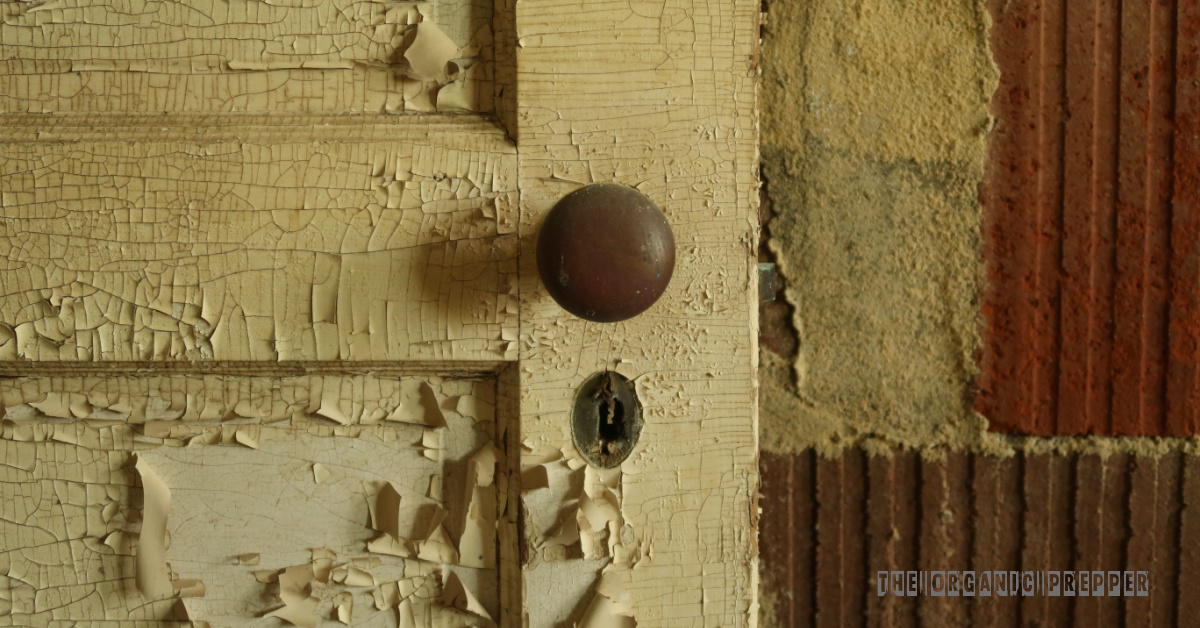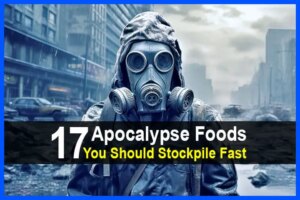(Psst: The FTC wants me to remind you that this website contains affiliate links. That means if you make a purchase from a link you click on, I might receive a small commission. This does not increase the price you’ll pay for that item nor does it decrease the awesomeness of the item. ~ Daisy)
Author of The Dark Secrets of Survival and the online course SHTF Survival Boot Camp
No matter what the prepping industry and preppersphere likes to say, you usually will never have a perfect plan, perfect settings, or perfect gear that will work everywhere and every time.
And no, you are not perfect, you are just human being.
It is not only connected to prepping and survival, this, you should be best, first, “perfect” or whatever is part of normal modern consumerism world.
The thing is that in survival, your “I am perfect”or “My preps should be perfect” may lead you to mistakes and eventually to bad things.
Good enough
For all of us who are normal average folks, there is something that we will be forced to implement sooner or later when SHTF and it is thought (or principle) that we called “good enough” here in the Balkans.
At this moment, you need to understand that “good enough” works only if you put it in context.
It works differently in different contexts.
Here is one example: is rainwater that you collected from the rooftop safe for drinking?
In the context of normal everyday life (not SHTF) where you want to collect water from roof for drinking, it is not safe for drinking.
Why?
Well, roofs may be dirty, air may be polluted (so the rain is polluted, too), gutters may contain dirt… and you have normal “pure” water available from other sources (tap water, bottled water from the store, etc.)
So, why would you risk your own health by drinking rainwater? Even after you invested work in filtering and boiling it, it is still not completely safe, and you still have normal access to clean water from normal sources.
So, in this context it is not safe, do not bother.
Now, if you put this question of “is rainwater collected from roof safe to drink” in time of SHTF, when normal services are not working, there is no running water, no electricity, no normal life… you have a completely different context.
You have a situation now where you do not have drinking water, and possibly it is dangerous to go and look for safer sources of water, so basically, you are in a moment where you going to choose whether you are going to drink rainwater or you are going to suffer without water, which will lower your other capabilities that you are going to need hard in time of SHTF, and eventually, you will die without it.
Well, you are going to drink it because, in this context, it is good enough.
Of course, you will do whatever you want to make it cleaner, boiling, filtering etc, but it is not going to be 100 percent safe – it will be good enough because you need it very much.
You are still going to be faced with the danger of drinking some amounts of chemicals from pollution or roof type or whatever, BUT in this context, it is about you choosing between having some bad impact on your kidney or liver that might show up years later or you dying without water (or being not ready to defend yourself or to collect other resources because you are desperately thirsty).
Another example would be sleeping in partially destroyed building where there is probably asbestos dust from destroyed roofs and other material. If you are choosing between standing in the rain and hiding in that partially destroyed building with asbestos dust, common sense says you will stay in the rain.
On the other side, if we change the context and you are choosing between that asbestos dust and being rounded up in the street and shot in the middle of a civil war or some similar SHTF, you would run to an asbestos dust building and spend the night there because it is good enough.
This good enough is something that you will meet very often when SHTF, and it is very important to recognize it in time-fast, so it may save your life.
Sometimes, from two bad things, you will have to choose a thing that is less bad.
We are conditioned to recognize bad things, especially if we live in functional societies. We have learned to see things that are not safe.
It is good to spot those things, but when SHTF, almost all things become unsafe, and usually, you will have to choose things that are good enough, but at the same time, they will still be unsafe.
Two ends of this
There is something else that needs to be mentioned here: there are two opposite ends to this. One is “Nah, whatever, “and the other is “It needs to be perfect.”
Both are kind of wrong. Based on this being good enough, you might think of it as I said: Everything will work and everything will be good enough. That is not true. This end is shrugging your shoulders and not taking any precautions at all or trying to make things the best that you can in the situation.
It is not like that: good enough means that you recognize what will work and what will save you in a given context, what will work and save you in that moment when danger is immediately – and use it that is good enough.
The other end is that you need to be 100 percent sure that something is working before you use it (do it); in other words, it needs to be perfect. It will never be perfect when SHTF. It cannot be. Plans will fail, equipment will not work, people will fail…you will work with what you have with what is good enough.
The point is that you will need to be somewhere between these two ends, but of course, always aim to be the best.
If we use both the above examples (rainwater and asbestos dust building), common sense says you will aim for the best your filtrate and clean that water in whatever way you possibly have and can. You will aim for best.
But if you need it badly, boiling and filtering it through clothes will be good enough if you do not have any other additional way of filtering and cleaning it.
If you need fast and badly to take shelter in that asbestos roof building, you’ll do it, but still, you might wear some kind of mask or pull your t-shirt up over your face, or you’ll choose a place with less destruction in the building. You’ll take care that something not fall on your head… you’ll do as best as possible.
Good enough is good enough.
So, this good enough is not you being negligent, and it is not you shivering in fear because nothing is completely safe.
It is you doing things, completing task with choosing less risks, less bad stuff. It is you surviving by being smart.
What are your thoughts on “good enough?” Can you think of any other examples where this might apply? Do you have any reasons why you don’t agree with this philosophy?
Let’s discuss it in the comments section.
About Selco:
Selco survived the Balkan war of the 90s in a city under siege, without electricity, running water, or food distribution.
In his online works, he gives an inside view of the reality of survival under the harshest conditions. He reviews what works and what doesn’t, tells you the hard lessons he learned, and shares how he prepares today.
He never stopped learning about survival and preparedness since the war. Regardless of what happens, chances are you will never experience extreme situations as Selco did. But you have the chance to learn from him and how he faced death for months.
Real survival is not romantic or idealistic. It is brutal, hard, and unfair. Let Selco take you into that world.

















